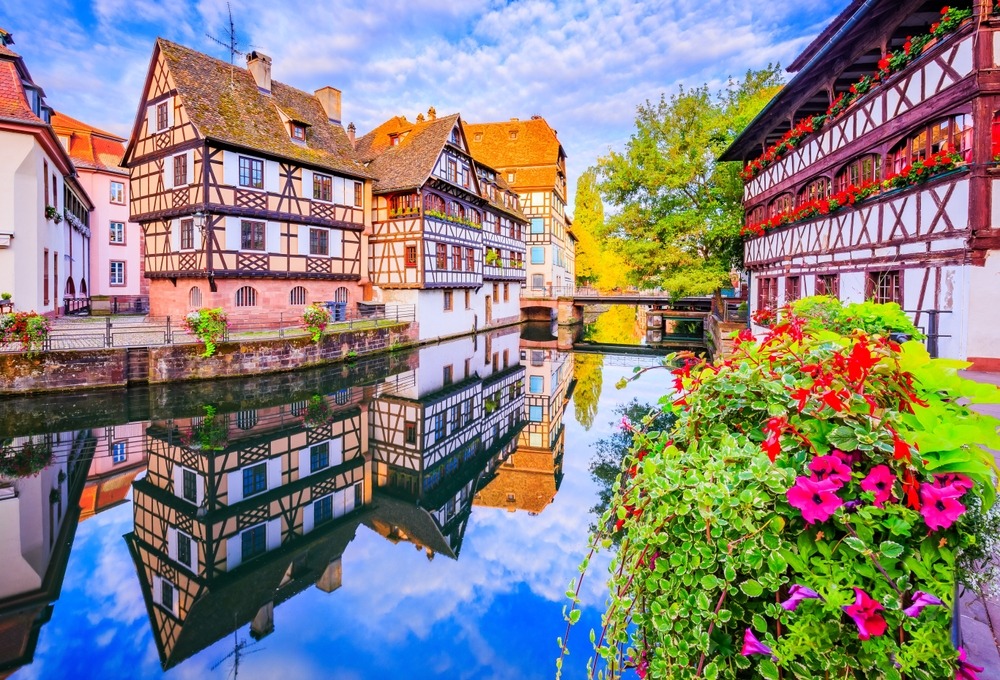Strasbourg, France: A Historical and Cultural Gem at the Heart of Europe
Strasbourg, a city where French charm meets Germanic precision, has stood for centuries as a crossroads of cultures, languages, and empires. Nestled along the banks of the Rhine River, Strasbourg’s strategic location has made it a coveted prize throughout history and a symbol of reconciliation in modern times. Originally a Roman military outpost known as Argentoratum, the city grew rapidly in the Middle Ages due to its position on key trade routes. By the 13th century, Strasbourg became a Free Imperial City within the Holy Roman Empire, experiencing a golden age marked by religious reform, architectural splendor, and commercial prosperity.
The Protestant Reformation had a significant influence on Strasbourg. Figures like Martin Bucer helped transform the city into a bastion of Lutheranism. However, it retained religious diversity for centuries. In 1681, Louis XIV annexed Strasbourg to France, an act that dramatically shifted the city’s cultural alignment. Over the centuries that followed, the city oscillated between French and German control—particularly during the Franco-Prussian War, both World Wars, and the Treaty of Versailles—cementing its identity as a Franco-German hybrid.

Post-World War II, Strasbourg emerged not only as a symbol of European unity but also as a centerpiece of it. The city was chosen as the seat of the European Parliament and several other major European institutions, affirming its identity as a bridge between nations. Today, Strasbourg is a UNESCO World Heritage Site and a leading center for culture, education, gastronomy, and governance.
Top 25 Attractions in Strasbourg
-
Strasbourg Cathedral (Notre-Dame de Strasbourg) – A Gothic masterpiece, this awe-inspiring cathedral is famed for its astronomical clock and its stunning façade of pink sandstone.
-
La Petite France – This historic quarter, with its half-timbered houses, canals, and cobblestone streets, offers a picturesque stroll through old Strasbourg.
-
Palais Rohan – A former royal residence housing three museums: the Museum of Fine Arts, the Archaeological Museum, and the Decorative Arts Museum.
-
European Parliament – A visit to the heart of European democracy includes guided tours explaining the workings of the EU legislative body.
-
Parc de l’Orangerie – The city’s oldest public park, ideal for a peaceful walk, a boat ride, or a visit to the small zoo.
-
Strasbourg Museum of Modern and Contemporary Art (MAMCS) – A vibrant collection of modern works housed in a striking glass-and-metal building along the Ill River.
-
Alsatian Museum (Musée Alsacien) – Housed in several restored timber-framed homes, this museum preserves the traditions, costumes, and domestic life of the Alsace region.
-
Vauban Dam (Barrage Vauban) – Built in the 17th century, this engineering marvel offers rooftop panoramic views and insight into historical city fortifications.
-
St. Thomas Church (Église Saint-Thomas) – Known for its baroque organ played by Mozart, and the elaborate tomb of Marshal Maurice de Saxe.
-
Ponts Couverts (Covered Bridges) – These iconic bridges with their medieval towers once defended the city and now provide scenic photo ops.
-
Place Kléber – The city’s main square, bustling with life and home to events, markets, and historical monuments including a statue of General Kléber.
-
Maison Kammerzell – A beautifully preserved Renaissance-era merchant house with ornate carvings and stained glass, now functioning as a restaurant.
-
Strasbourg Opera House (Opéra National du Rhin) – One of France’s most important opera venues, offering world-class productions in a neoclassical building.
-
Synagogue de la Paix – A significant post-war Jewish landmark built in 1958, symbolizing religious resilience and revival.
-
Place Gutenberg – Named after Johannes Gutenberg, who printed his first Bible in Strasbourg, the square features a statue and seasonal fairs.
-
Botanical Gardens of Strasbourg – Operated by the University of Strasbourg, this garden features thousands of plant species and a peaceful atmosphere.
-
Historical Museum of Strasbourg (Musée Historique) – This museum chronicles the city’s journey from medieval times to modernity, featuring period artifacts and interactive exhibits.
-
St. Paul’s Church (Église Saint-Paul) – Built for the German garrison in the 1890s, this neo-Gothic church is notable for its twin spires and riverside setting.
-
Galeries Lafayette Strasbourg – A major shopping destination housed in a grand department store blending history with haute couture.
-
Neustadt District – A UNESCO-listed area showcasing Prussian urban planning with impressive boulevards and architecture from the German Empire period.
-
Le Vaisseau – A science center for families and children, combining fun, discovery, and educational hands-on exhibits.
-
Cave Historique des Hospices de Strasbourg – A historic wine cellar beneath the city hospital dating back to the 14th century, still producing wine today.
-
Strasbourg Christmas Market (Christkindelsmärik) – One of the oldest and most celebrated Christmas markets in Europe, lighting up the city each December.
-
Museum Œuvre Notre-Dame – Focused on Upper Rhine art from the Middle Ages to the Renaissance, with a special focus on works related to the cathedral.
-
Musée Tomi Ungerer – International Illustration Centre – A tribute to the Strasbourg-born illustrator, showcasing political cartoons, children’s book art, and erotic sketches.

Strasbourg enchants with its blend of medieval grandeur, European significance, and Alsatian warmth. Whether you’re marveling at the spires of the cathedral, cruising the Ill River, or strolling through cobbled lanes lit with holiday cheer, Strasbourg offers a unique and unforgettable encounter with the heart of Europe.

































